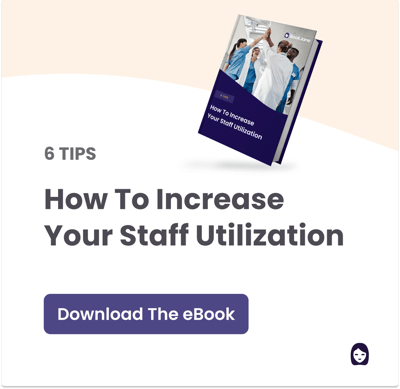
Internal Staffing Pools Are Key For Relief Of The Staffing Crisis
Even before the pandemic, problems with staffing have been putting strain on retirement homes, long-term care centers, and other healthcare facilities. Demand for these services continues to increase as the population ages, but staffing shortages, high turnover rates, and burnout can leave operators of these facilities scrambling to fill shifts. While relying on agencies and overtime can fill the gaps, they can cause problems for both consistency of care and your budget. So what is the solution?
Getting creative with staffing helps healthcare operators cope. Whether it’s creating a dedicated pool of internal staff whose sole purpose is to take extra hours or leveraging part time or casual staff (who are often underutilized) more often using the resources you already have can not only save you time and money, it can also lead to better quality care. For healthcare facilities looking towards the future, internal staffing pools aren’t just a creative solution for filling shifts — they’re essential.
What are Internal Staffing Pools?
Internal staffing pools are a staffing strategy used by care facilities to fill shifts using resources they already have, rather than calling out for agency or overtime help. Whether it’s creating pools of workers whose sole purpose is to fill last minute shift vacancies or creating pools of traditionally underutilized workers, internal staffing pools are a way to make better use of your existing resources before resorting to outside help. This can be a great solution not just for your budget, but also for the quality of care you can provide and your employee morale.
Why Internal Staffing is the Answer
Despite increasing pressures on the amount of staff you have in your facility, the number of hours they can work, and the amount of patients who need care, many healthcare workers are actually looking for shifts.
Research suggests that 94% of health care aides consider working in senior’s care an honorable and rewarding career, and 91% of care aides find meaning in their work and see its value. However, health care workers are overrepresented among those working multiple jobs in Canada, and often need the support of more than one facility to make ends meet.
Research conducted on health care aides suggests working overtime in a stressful environment (including seniors care, where aides have a higher chance of experiencing dementia related responsive behaviors) increases the incidence of burnout. However, a supportive work culture, including access to regular staff meetings and other team activities, was associated with higher feelings of accomplishment in workers — something that suffers when you depend on outside help.

Happier, more engaged workers lead to better patient outcomes. When you have an internal staffing strategy that works, you fill shifts with employees who want to be there, rather than new agency hires scrambling to learn the ropes or full time workers burned out from working overtime. When burned out workers come to work, they make mistakes. The same is true for workers who are strained by finding enough hours to make ends meet or trying to learn the ins and outs of a new facility.
In senior care, this becomes even more important: research suggests that consistent staffing in care homes leads to better patient appearance and hygiene, the ability create relationships with patients, as well as higher job satisfaction. Patients need to see familiar faces, and staff who are consistently on the floor are going to be better able to predict what their co-workers and patients need. In addition to these factors, workers who want to be there — because of the flexibility to select their own shifts and the familiarity with their workplace — are the ones who are going to find fulfillment in their work and be giving it their all.
It’s also good for your bottom line. Staffing internally, whether you’re sharing staff between facilities, using a dedicated staffing pool, or incorporating more part time or casual workers to fill shifts, can help you use resources you already have. These are staff who are already trained in your facility’s methods, on your payroll, or part of your union. By incorporating staff who are underutilized into your schedule, spotting opportunities to cut costs by eliminating agency hires, or paying less overtime, you can decrease labour costs overall.
How Technology Can Help
One of the main benefits to having an internal staffing plan in place is cost: whether it’s reducing overtime pay, cutting back on agency spending, or reducing the time you invest training new employees, using what you already have saves you money. However, in an industry dominated by manual processes (for example, filling shifts with workers you have to call one by one), finding these cost-saving opportunities and gaps can be tricky.
Incorporating technology (such as BookJane J360 Workforce) into your medical practice is an easy way to make the internal staffing process easier. With the ability to rapidly deploy staff (for example, by offering available shifts by email or text to employees who are qualified to fill them), fill shifts without manual oversight, and track employee behavior over time (for example, seeing who is consistently working overtime, and who might be underutilized), technology can have an immediate impact on your bottom line. If you are able to see the shifts you consistently need to fill with overtime workers or agency help, you’ll be able to offer these shifts to part time workers at an incentive — a direct savings to your facility’s budget.
Whether you’re struggling to fill shifts due to staffing shortages or you just want to make your facility more efficient overall, the answer isn’t looking for outside help. By making better use of the staff you already have in your practice, you can not only save money and time — you can make your care facility a safer, happier place for both staff and patients.




